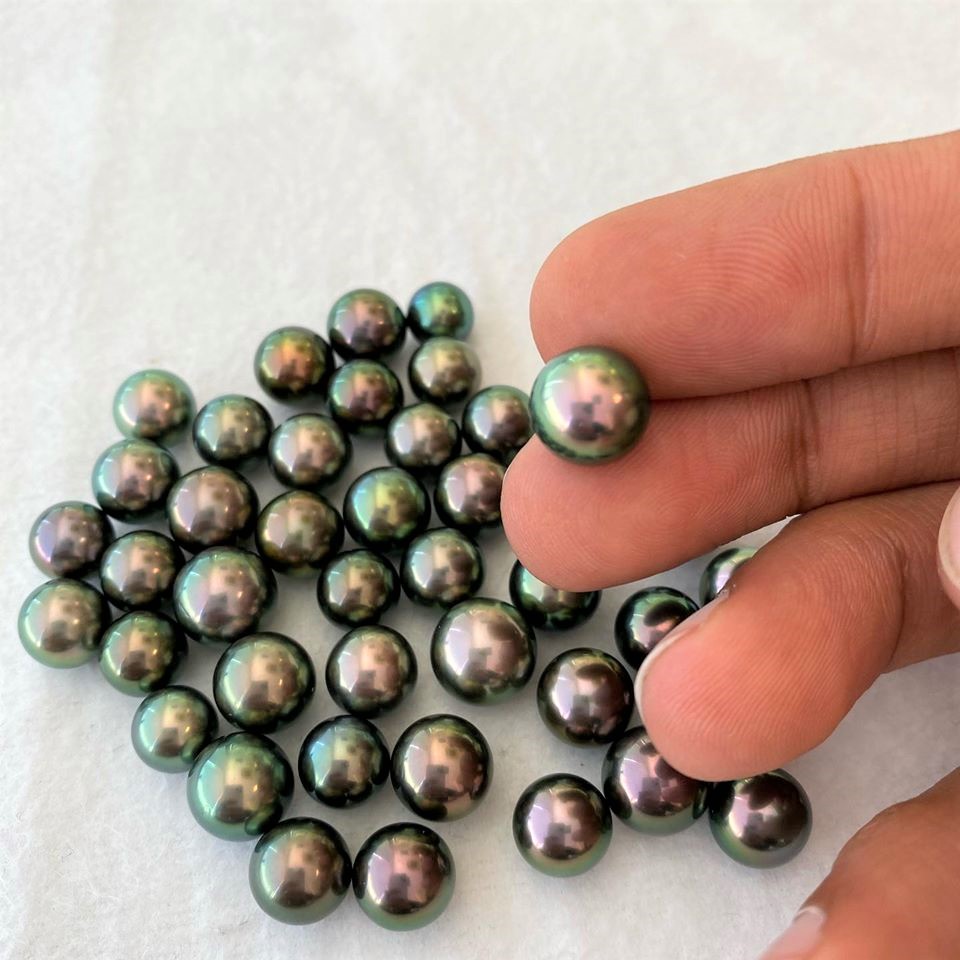The Tahitian pearl is formed in the black-lipped oyster Pinctada margaritifera. They are primarily cultivated around the islands of French Polynesia. Tahiti, the main archipelago, does not have any pearl farms located in its island, but it is the central trading post for much of the industry.
Tahitian Pearls

Tahitian pearl farm map.
In 1961, French veterinary surgeon Jean-Marie Domand began experimenting with the Pinctada margaritifera using Japanese culturing techniques. Four years later, the first cultured Tahitian pearls were harvested. The 1970s saw the rise of Robert Wan, a young entrepreneur who mass-produced pearls grown in French Polynesia. His efforts, along with other pearling pioneers, brought these exotic gems to the world stage and in just a few decades, the Tahitian pearl would become French Polynesia’s largest export.



Examining pearls at an auction in Tahiti, French Polynesia
Because of their darker hues, Tahitian pearls are traditionally known as “black pearls”. The term can be misleading, however, since Tahitian pearls can come in a wide range of natural colors from dark-black to silver-white, and nearly every vibrant color in between. The body color is usually enriched by at least one overtone such as green, pistachio, aubergine, pale blue, slate gray, brown, purple, creamy white, and a multitude of other colors. Tahitian pearls considered most exquisite have a high luster of green with pink overtones (“peacock” colors).
Tahitian pearl strands in a spectrum of colors
Black-lipped pearl oysters are quite large, each measuring a foot or more across and weighing as much as 10 pounds. As such, they produce very large pearls. Tahitian pearls typically range in size from 7mm to 18mm in diameter. Pearls outside of this range do exist but they are considered extremely rare.
Tahitian pearls come in a variety of shapes. The most valuable of these pearls have perfectly round shapes. The more symmetrical the shape, the higher the valuation. Other desirable shapes include semi-baroque (drops, buttons, ovals, pear shapes, and all their variations) and baroque (pearls lacking any axis of symmetry). Baroque shapes can be quite lovely and in fact, appeal to many pearl enthusiasts. Lastly, some Tahitian pearls have circular rings around their body and may be considered less valuable. Yet, these “circle” pearls usually exhibit an interesting concentration of colors in their bands that they can equal or even surpass the beauty of the ideal shapes.
Tahitian pearls in a variety of shapes and sizes



